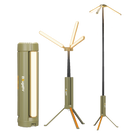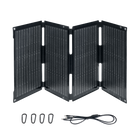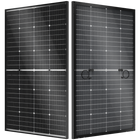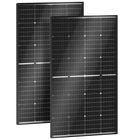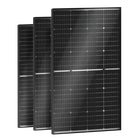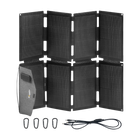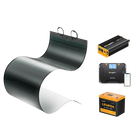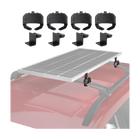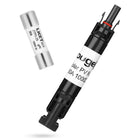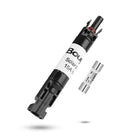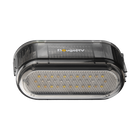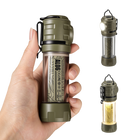What Is an Amp? Simply Explained!


Ever wondered what makes all our gadgets and appliances tick? Well, it's all about electricity and its key players: amps, volts, watts, and ohms.
Amps are one of the four basic quantities that describe electricity, along with volts, watts, and ohms. In this blog, we're going to break down each of these terms and shed some light on how they relate to each other.
Stick around, because by the end of this blog, you'll be totally in the loop about what an amp is and why it matters. Plus, we've got answers to some burning questions you might have about amps and the electric currents that keep our world powered up.
So grab a cup of coffee, get comfy, and let’s unravel the mystery of amps together!
What Are Amps?
Amp, short for ampere, is the unit of electric current. The electric current refers to the rate at which electrons flow through a conductor, and it's represented by the letter 'I' in electrical equations.
To understand what an amp is in simple terms, you can think of it as the rate of flow of water through a pipe. The more water flows through the pipe, the higher the current. The less water flows, the lower the current.
The symbol for ampere is A. For example, you might see a label on an appliance that says "120V 15A", which means that it operates at 120 volts and draws 15 amps of current.
What Are Volts?
Volt, short for voltage, is the unit of measure for electrical voltage and is denoted by the letter “V” in electrical equations. Volt is the difference in electric potential between two points in a circuit. The higher the voltage, the more potential energy a charge has to move from one point to another. The lower the voltage, the less potential energy a charge has.
Amperage and voltage are two different, yet related, concepts in electricity. Amperage measures how much charge flows through a circuit in one second, while voltage measures how much potential energy a charge has to move from one point to another in a circuit. You can think of amperage as the speed of water flowing through a pipe, and voltage as the pressure that pushes the water through the pipe. The higher the pressure, the faster the water flows.
What Are Watts?
Short for wattage, the watt is the unit of power or work done per unit time. Power is the rate at which energy is transferred or converted from one form to another. In electrical equations, power is represented by the letter “P”.
Using the water analogy, power can be a bit more complex to describe. With a hose, you can increase the power either by turning up the flow of water or by increasing the pressure of the water. Similarly, in an electrical system, you can increase the power by increasing either the current or the voltage.
What Are Ohms?
Ohm is the unit of electric resistance or opposition to current flow. Resistance is a measure of how much a material or device resists or reduces the flow of electric current through it. The higher the resistance, the less current flows. The lower the resistance, the more current flows.
Uniting All the Pieces
Ohm’s Law: V = IR

Source: power-and-beyond
The relationship between amps, volts, and ohms can be expressed by a simple formula called Ohm's law, which states that voltage equals current times resistance or V = IR. You can rearrange this formula to get I = V/R or R = V/I. This formula allows you to determine how much current flows through a resistor (such as a light bulb) when a certain voltage is applied across it, or it can tell you the amount of resistance a resistor has when a certain current flows through it.
Power Law: P=VI

Source: electronics-tutorials.ws
You can also use another formula called the power law, which states that power equals voltage times current, or P = VI. You can rearrange this formula to get V = P/I or I = P/V. This formula tells you how much power is consumed by a device (such as a light bulb) when a certain voltage is applied across it and a certain current flows through it, or how much voltage is required to produce a certain power output with a certain current input.
Using these formulas, you can calculate any of the four quantities (amps, volts, watts, or ohms) if you know the other three. For example, if you know that a light bulb has a power rating of 60 watts and operates at 120 volts, you can calculate its current by using I = P/V = 60/120 = 0.5 amperes.
Alright, let's consider setting up a solar energy system for your RV. Think about you’re installing a solar panel on your RV that is rated at 200 watts and the system voltage is designed to be 12 volts, typical for many RV electrical systems. To calculate how much current your solar panel will produce, you can use the formula I = P/V:
Current (I) = Power (P) / Voltage (V)
Current(I) = 200 watts / 12 volt = approximately 16.67 amperes.
These calculations are vital to ensure that your wiring is sufficient to handle the current, that your charge controller can correctly handle the input without breaking a sweat, and that the overall system is safe and efficient.
Amps, Volts, Watts, Ohms: Differences Explained!
Amps measure electric current, volts measure electric potential difference, watts measure electric power and ohms measure electrical resistance. They are all important quantities in electricity.
So far, you’ve got the hang of these quantities in electricity, their differences, and their relationship. Now you must be more pumped to dive into your RV or home solar setups.
Final Thoughts
Till now, we’ve explained what an amp is and how it relates to other electrical quantities such as volts, watts, and ohms. We have also shown how to use Ohm's law and the power law to calculate any of these quantities if you know the others.
We hope this post has helped you understand what an amp is and its significance in electrical systems. Interested in RV solar setups? Take a look at BougeRV now!
Read More:
FAQs
1. What Is an Amp-Hour?
An ampere-hour or amp-hour (often simplified as Ah) is a unit of electric charge. It measures the amount of charge that flows through a circuit over the course of one hour. One amp-hour is equal to one ampere of current flowing for one hour, or 3600 coulombs of charge. For example, a 100 amp-hour battery can supply 100 amps for one hour.
2. Are AC Amps and DC Amps the Same?
AC amps and DC amps are not exactly the same. AC stands for alternating current and DC stands for direct current. Alternating current is a type of electric current that changes direction periodically, while direct current is a type of electric current that flows in one direction only.
3. How Do You Measure Amps?
To measure amps, you can use an ammeter, or ampere meter, which measures the electric current in amps. An ammeter can measure either direct current (DC) or alternating current (AC).
4. How Many Volts in 1 Amp?
The relationship between volts and amps is not a direct conversion but rather defined by Ohm's Law, which states that 1 amp of current is the result of 1 volt of electric potential across a 1-ohm resistance. Volts measure electric potential, whereas amps measure current flow. The two quantities are interdependent within an electrical system, linked by resistance.
5. Does a Higher Amp Mean More Power?
Yes, higher amps generally mean more power. Amps, or amperes, measure the strength of a current, which is how fast it flows. Higher amps mean that electricity is flowing more quickly and delivering more power to a device.











